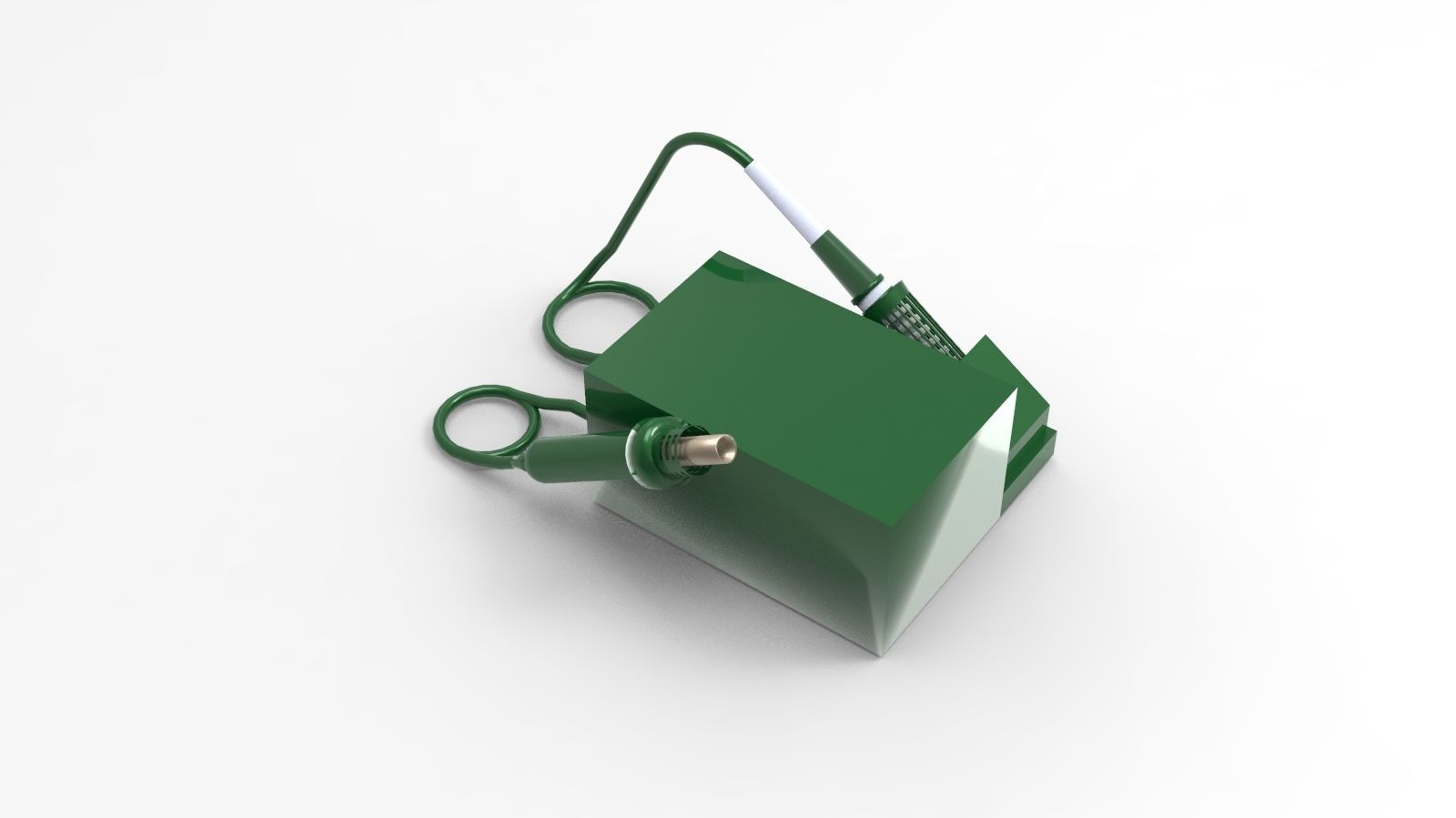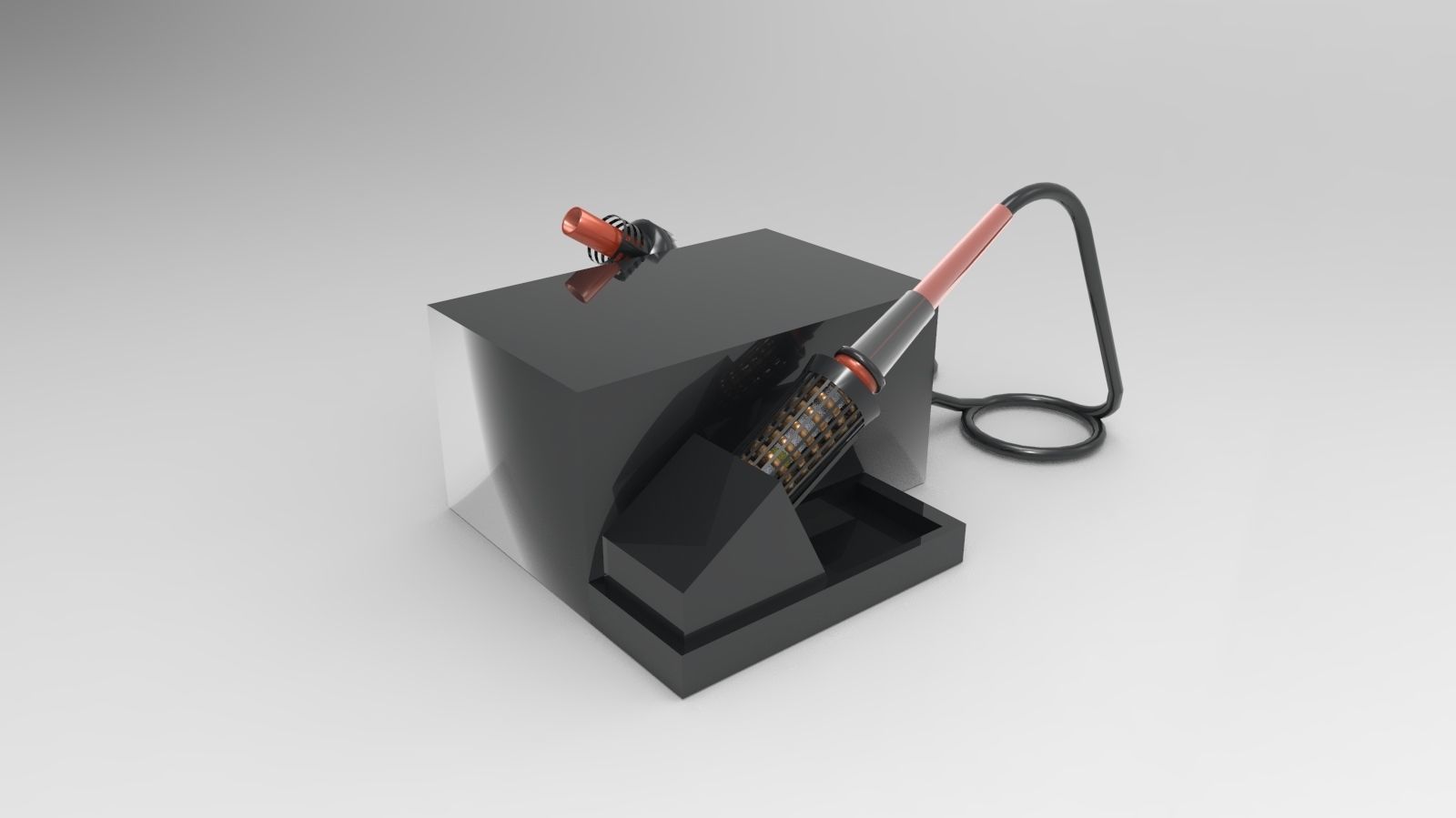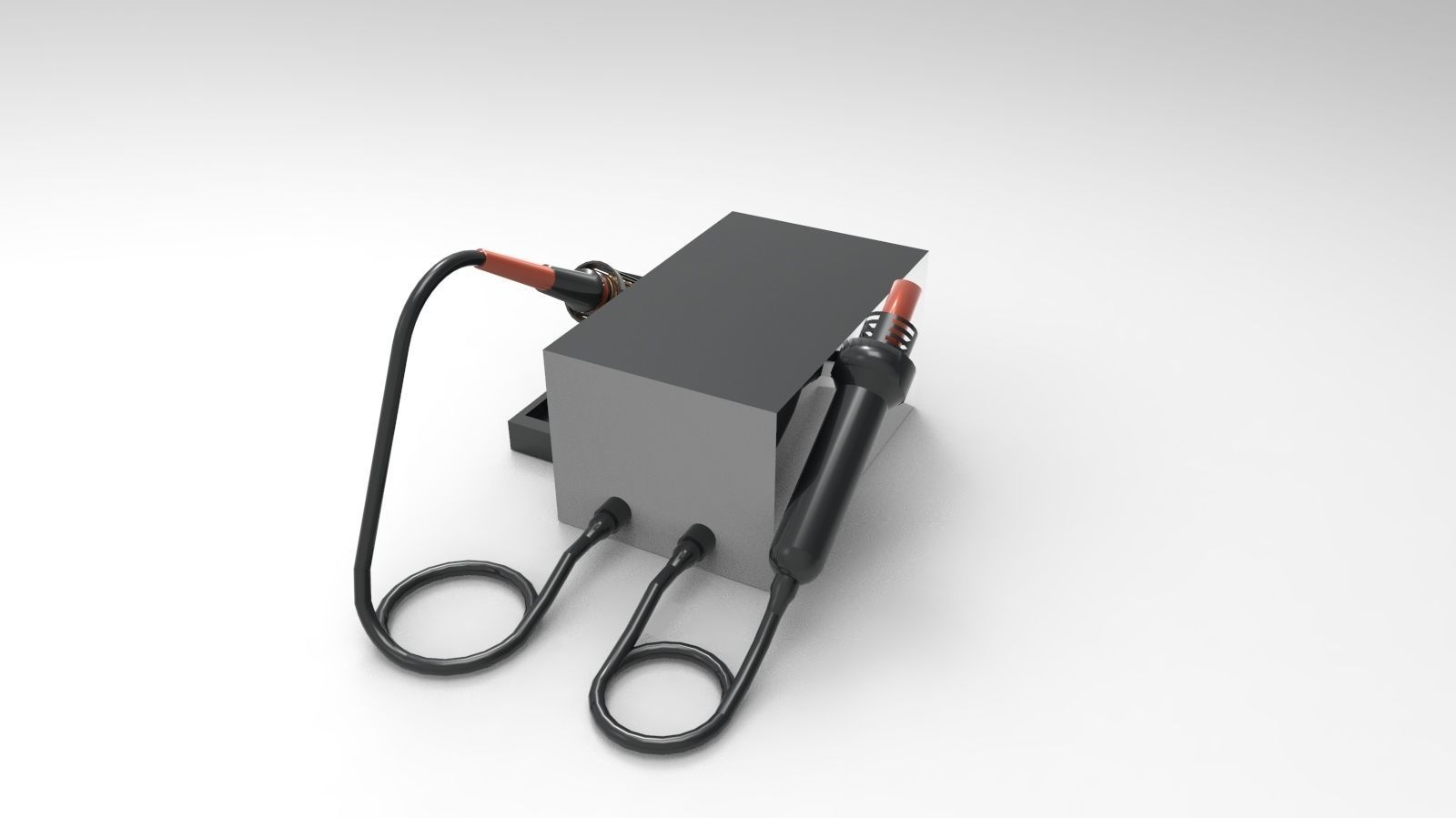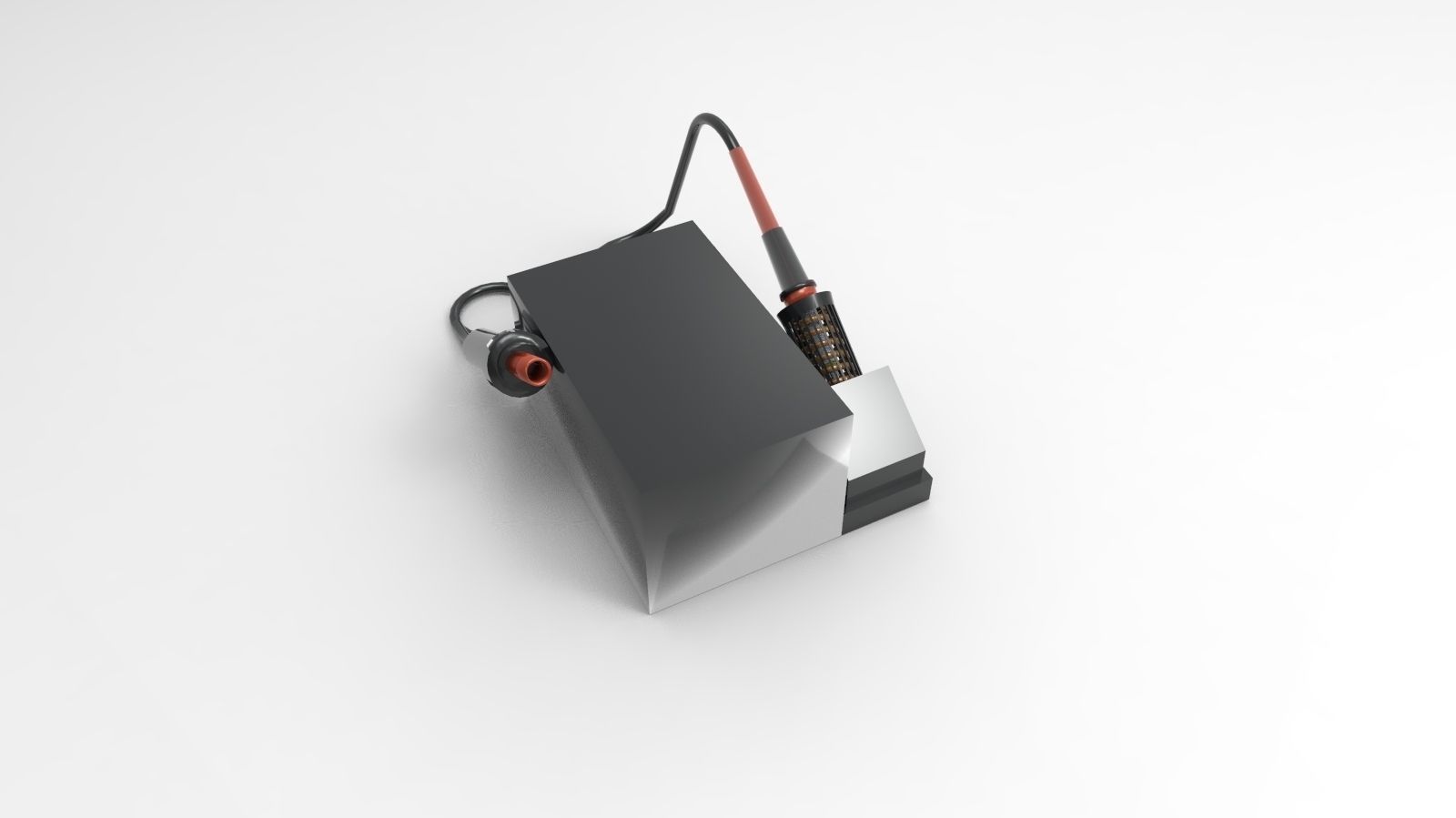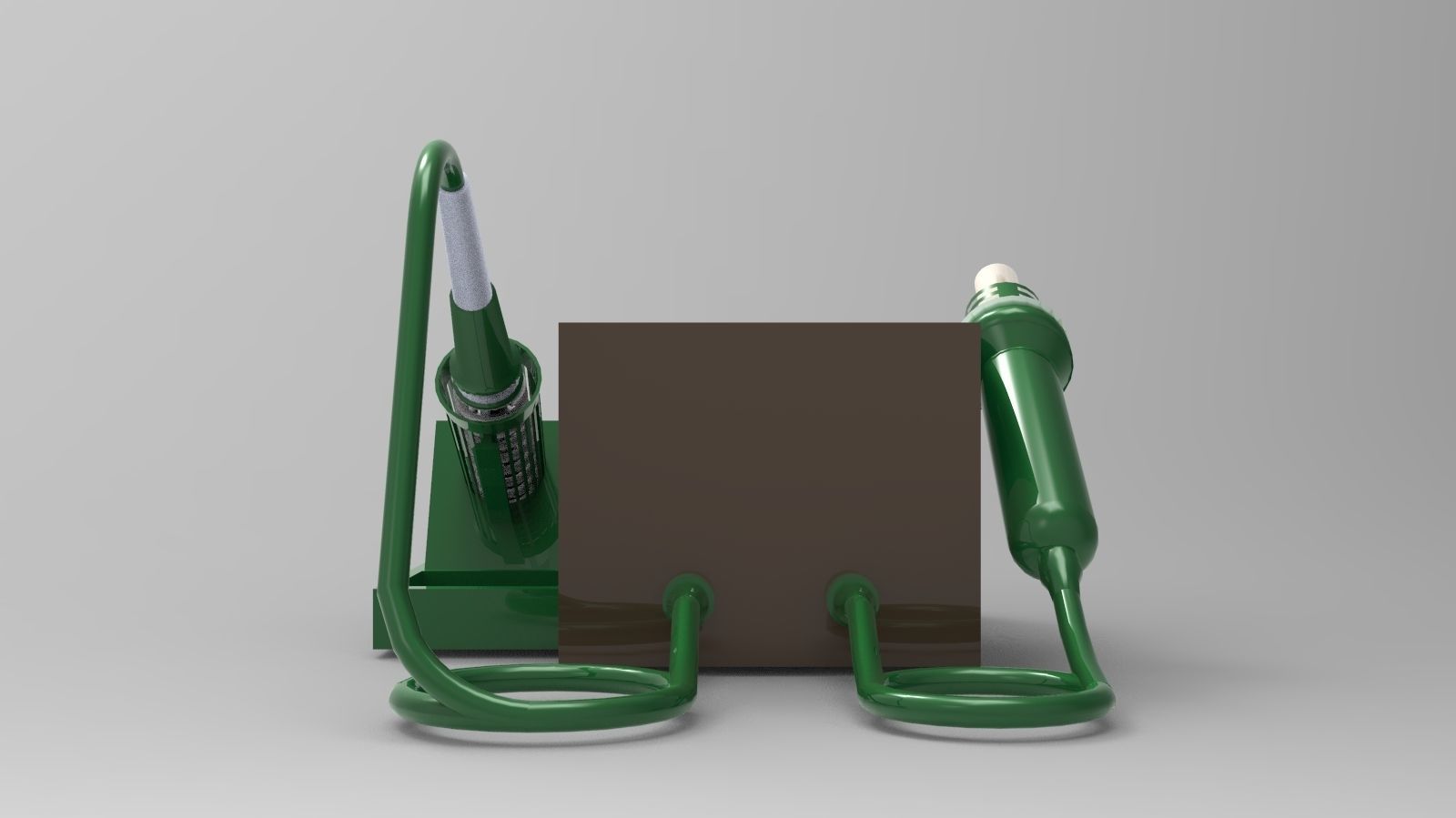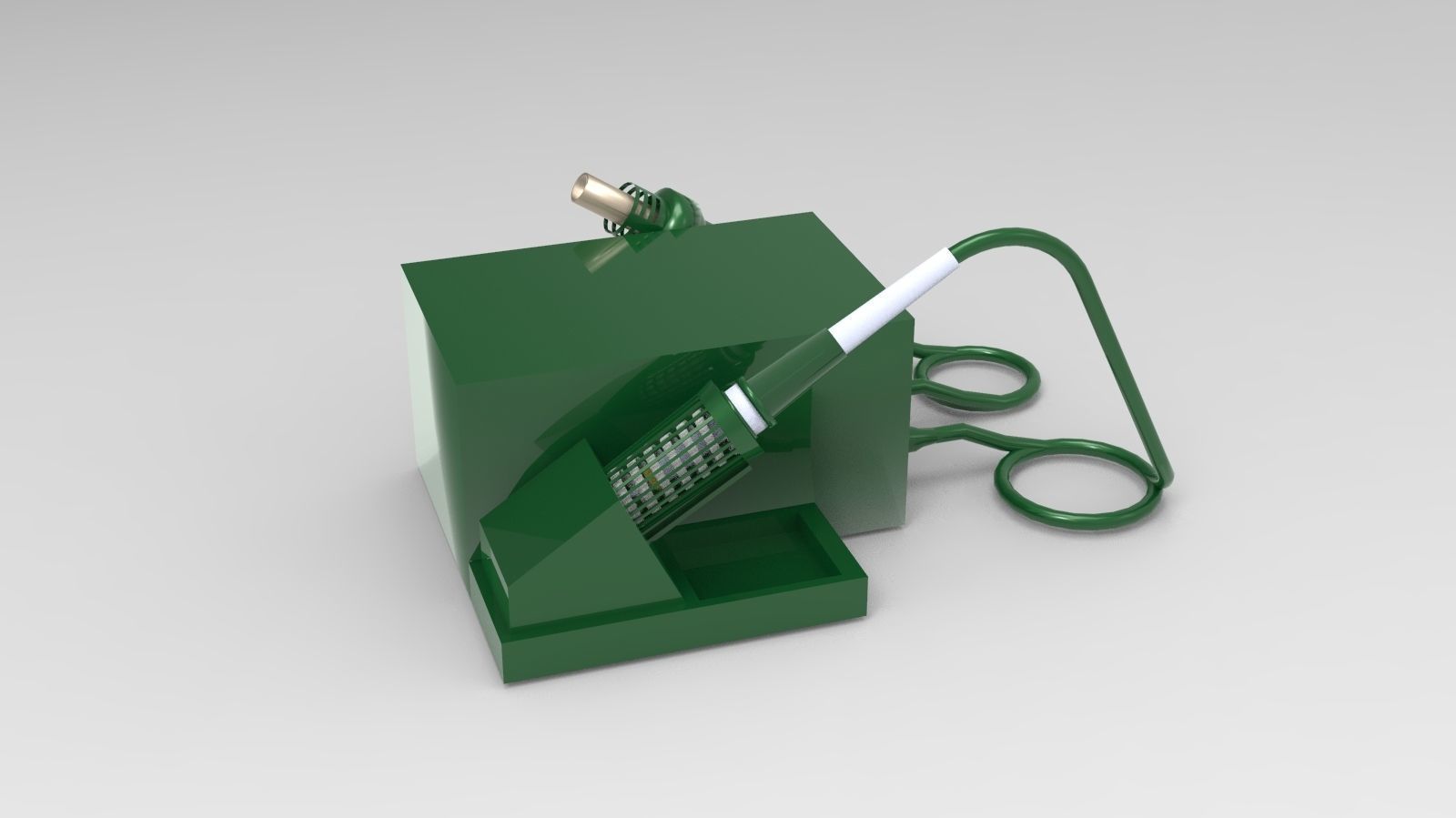
Solder station 3D model
Solder (UK: /ˈsɒldə, ˈsəʊldə/;[1] NA: /ˈsɒdər/)[2] is a fusible metal alloy used to create a permanent bond between metal workpieces. Solder is melted in order to wet the parts of the joint, where it adheres to and connects the pieces after cooling. Metals or alloys suitable for use as solder should have a lower melting point than the pieces to be joined. The solder should also be resistant to oxidative and corrosive effects that would degrade the joint over time. Solder used in making electrical connections also needs to have favorable electrical characteristics.
Soft solder typically has a melting point range of 90 to 450 °C (190 to 840 °F; 360 to 720 K),[3] and is commonly used in electronics, plumbing, and sheet metal work. Alloys that melt between 180 and 190 °C (360 and 370 °F; 450 and 460 K) are the most commonly used. Soldering performed using alloys with a melting point above 450 °C (840 °F; 720 K) is called hard soldering, silver soldering, or brazing.
In specific proportions, some alloys are eutectic — that is, the alloy's melting point is the lowest possible for a mixture of those components, and coincides with the freezing point. Non-eutectic alloys can have markedly different solidus and liquidus temperatures, as they have distinct liquid and solid transitions. Non-eutectic mixtures often exist as a paste of solid particles in a melted matrix of the lower-melting phase as they approach high enough temperatures. In electrical work, if the joint is disturbed while in this pasty state before it fully solidifies, a poor electrical connection may result; use of eutectic solder reduces this problem. The pasty state of a non-eutectic solder can be exploited in plumbing, as it allows molding of the solder during cooling, e.g. for ensuring watertight joint of pipes, resulting in a so-called wiped joint.
For electrical and electronics work, solder wire is available in a range of thicknesses for hand-soldering (manual soldering is performed using a soldering iron or soldering gun), and with cores containing flux. It is also available as a room temperature paste, as a preformed foil shaped to match the workpiece which may be more suited for mechanized mass-production, or in small tabs that can be wrapped around the joint and melted with a flame where an iron isn't usable or available, as for instance in field repairs. Alloys of lead and tin were commonly used in the past and are still available; they are particularly convenient for hand-soldering. Lead-free solders have been increasing in use due to regulatory requirements plus the health and environmental benefits of avoiding lead-based electronic components. They are almost exclusively used today in consumer electronics.[4]
Plumbers often use bars of solder, much thicker than the wire used for electrical applications, and apply flux separately; many plumbing-suitable soldering fluxes are too corrosive (or conductive) to be used in electrical or electronic work. Jewelers often use solder in thin sheets, which they cut into snippets.

